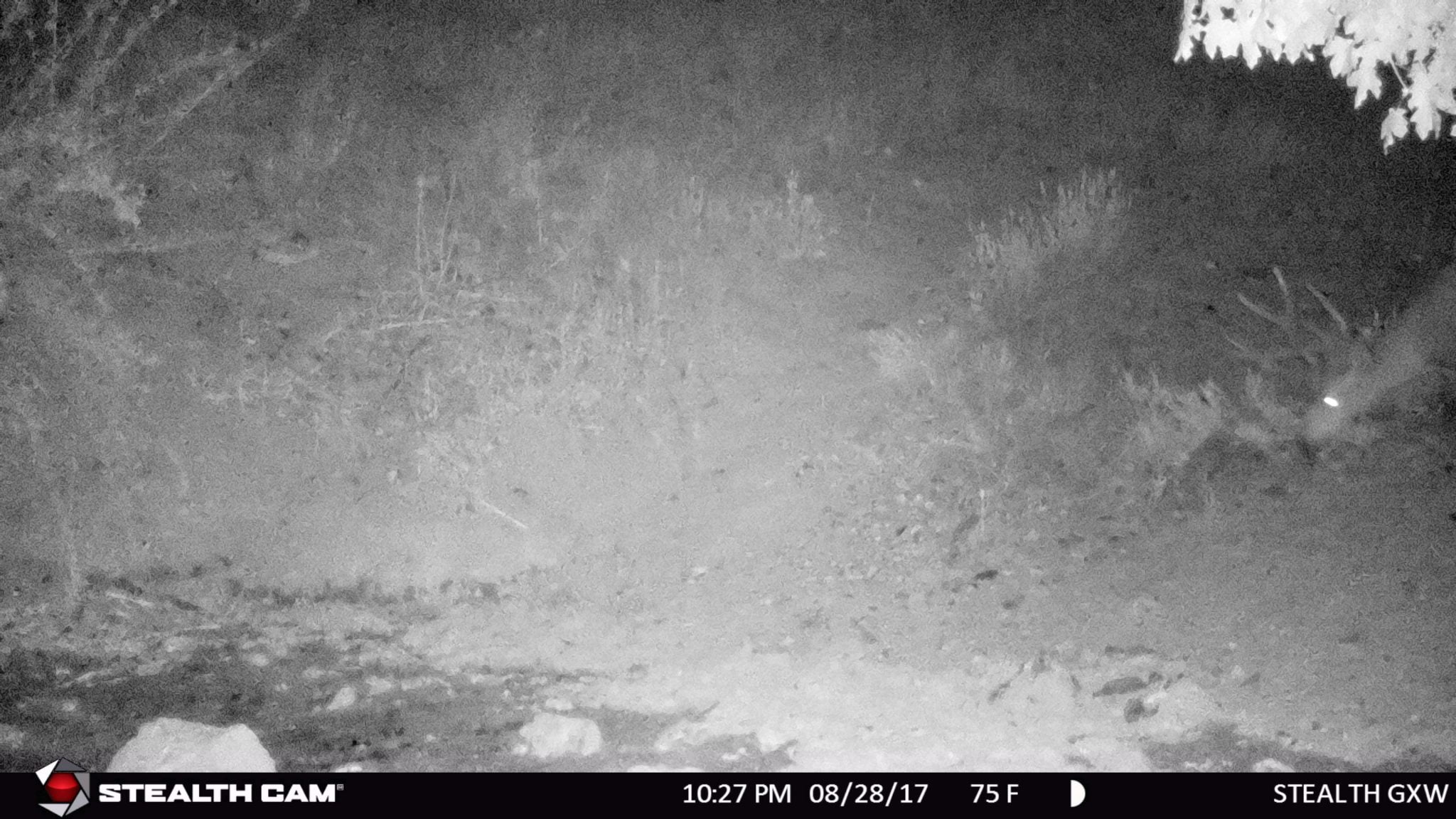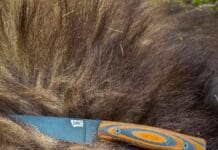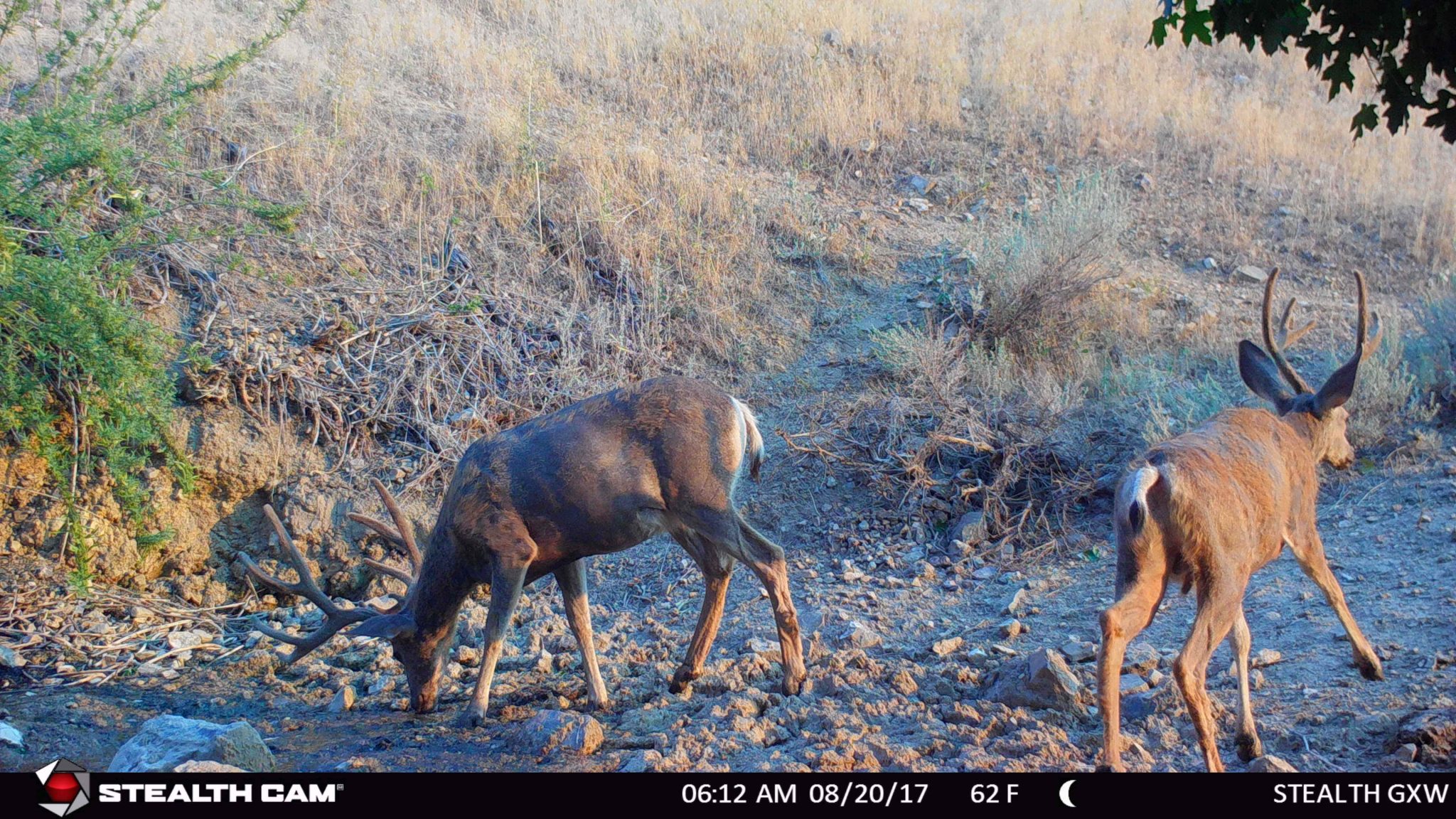 Review: Stealth Cam’s Wireless GXW Trail Camera
Review: Stealth Cam’s Wireless GXW Trail Camera
By Robby Denning, Rokslide Editor
While the term “game changer” has become a cliche, I still can’t help myself in applying it to trail cameras. These little devices have changed how hunters scout for wildlife in a big way. Users can now survey trials, mineral licks, and water sources 24-7-365. I started using trail cameras for hunting big mule deer back in 2008. Unless the laws change, I don’t see myself stopping anytime soon.
Last year, BlackOvis offered up a few of the new Stealth Cams for a review from Ryan Avery and me. We took on the review of their top-end wireless GXW and their entry level G34 and a few of the accessories. Following are our observations on the Stealth Cam GXW 12MP wireless trail camera. You can also follow a Rokslide forum discussion here. To note, check your state’s rules as wireless cameras may not be legal everywhere.
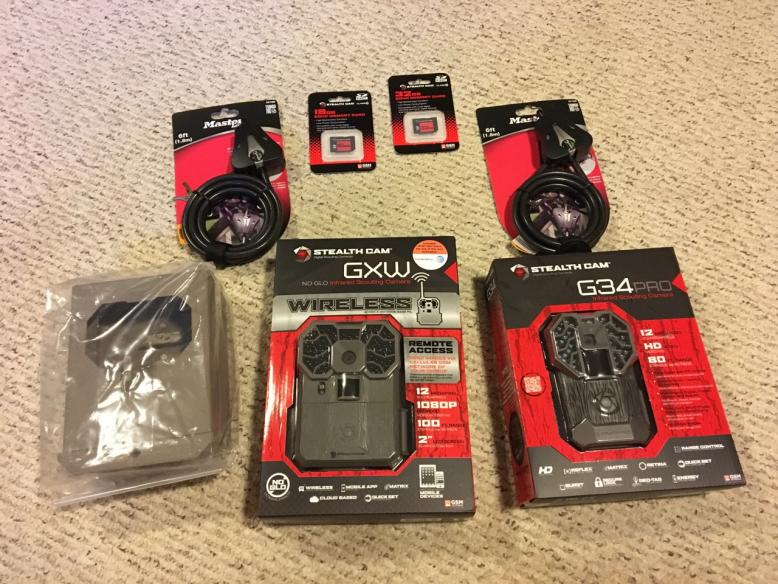 First, though, this review is not about the ethics or the effect of wireless trail cameras on hunter success. I’ll leave that for the hunting public and state wildlife agencies to decide and will happily accept any restrictions states may place on trail camera use in the future. My job for this article is to review the latest advancements in trail camera technology.
First, though, this review is not about the ethics or the effect of wireless trail cameras on hunter success. I’ll leave that for the hunting public and state wildlife agencies to decide and will happily accept any restrictions states may place on trail camera use in the future. My job for this article is to review the latest advancements in trail camera technology.
Wireless in this context simply means a trail camera that can transmit images to a user through cellular networks. These cameras are becoming popular in the Eastern whitetail plots where cell service is abundant. Without decent cell coverage, the wireless camera becomes just like any trail camera and must be checked manually. Western hunters need to choose wisely when considering the wireless option.
Kendall Card of BlackOvis told us we had to pick areas that had at least three bars of AT&T or T-Mobile service (there is a Verizon capable camera due out summer of 2018.) Both Ryan and I had places like that. We received the cameras in early June, 2017. The first step was getting the cameras set up and transmitting to our iPhones.
Set Up
There is a SIM card included that allows the camera to connect with the network once activated. The first thing we learned is DON’T GOT TO THE AT&T STORE for activation. Both Ryan and I had the same terrible experiences in different stores. They are clueless about how these cameras work with the SIM programs. The only benefit of visiting the store was to check their coverage map. I checked where I wanted to set the camera and saw that I had a solid 2-3 bars coverage. You can probably find the same map online.
The included yellow instruction booklet (the quick guide) along with your SIM card instructional whitepaper is all you need. I won’t go over the steps as they are spelled out fairly well, but make sure you have a free undistracted hour to do this (Ryan knocked his out in 20 minutes).
First, I purchased three months of data for $30 then put the SIM card into the camera (each camera will need it’s own data plan.) The GXW instructions say it can take some time for the camera to find the network. It took me over 10 minutes and it gave me no indication it was making any progress until, suddenly, it connected. Just be patient, it will work.
One tip for this process, the GXW drains a lot of battery during this set up (12 AAs required.) Per Stealth’s recommendations, I gathered up all the used alkaline batteries that I had for the set up. I had 20% battery when I started and sure enough, I was at zero by the time I was done (although the camera stayed operational). Stealth says use fresh lithium batteries once set up/initial testing is done before placing in the field, but I wasn’t ready for the mountain, so I loaded 12 more fresh alkalines in GXW for the next phase.
I also uploaded the Stealth Camera app on my iPhone (also available for Android), necessary to receive the wireless transmissions. The app was easy and intuitive. If you still don’t own a smartphone, this GXW camera is not for you as you won’t be able to view the images without retrieving the SD card.
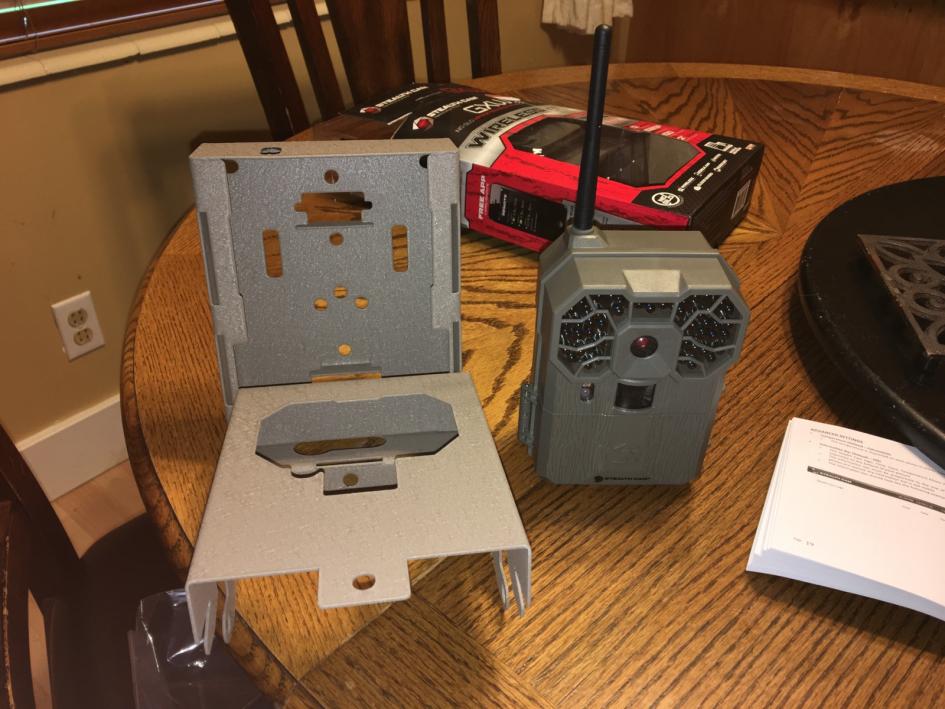
BlackOvis included a Bear Box to protect the camera. At $39, this is a wise investment to protect a $300 camera. Besides damage from animals, it can also prevent tampering from curious by-passers (the GXW is also password protected). The GXW fit perfectly in the box and when paired with the Yeti cable lock, the camera was ready for some outside action.
I placed the GXW in my horse pasture to confirm all the settings worked and to get the best picture quality per data usage. While the GXWs are 12MP capable, Stealth recommended trying lower settings to see how much data and battery would be consumed before leaving it in the woods.
I set the GXW to Quick Set 1 (8MP, 3-burst photo, 30 seconds between bursts) and I chose a 3-photo burst (there are two other Quick Set modes and a custom mode.) I then set the Activity (time photos are taken) to start at 7:00 pm and stop at 8:00 am (no need for 300 bird photos). Finally, I set the camera to transmit on the hour (this would be overkill in the woods and suck a lot of battery).
I woke up the next morning feeling a little like I do on Christmas. I checked my phone at 6:30 AM. Nothing. I had put my phone in airplane mode the previous night but thought it would receive updates when I reconnected to the network. It did not.
Then at 7:18 am, I saw a Stealth Cam notice hit the phone and all forward motion ceased! Bam, 78 photos were uploaded to my phone, starting with the first taken just after 7:00 pm and the last around 6:15 am.
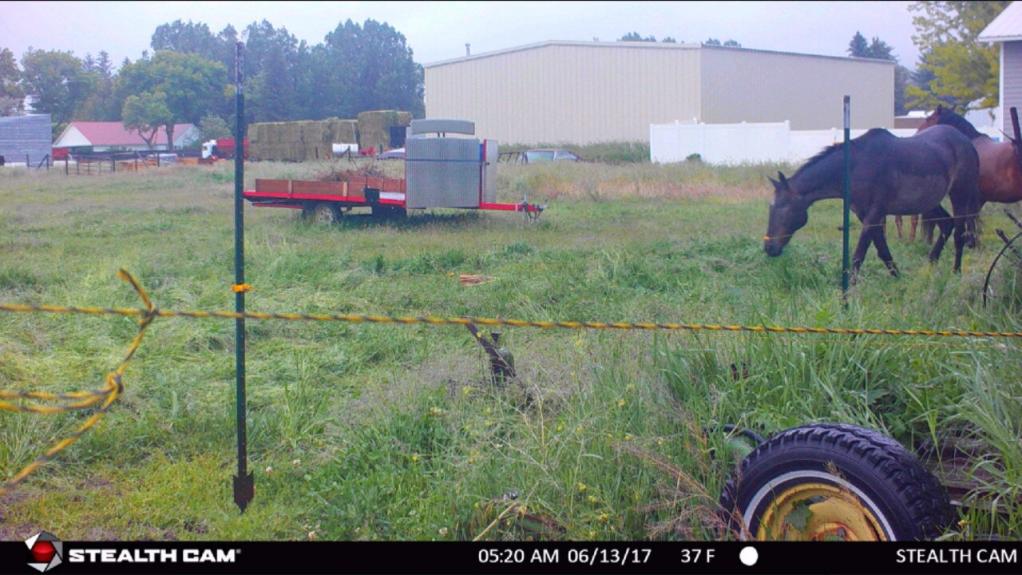
After that, I didn’t put my phone in airplane mode at night and received notifications of uploads on the hour. I ran the camera for 24 hours then checked data & battery usage:
- 521 photos
- Used 47% battery
- 149MB data used
This was way too high if I wanted to leave the camera unattended for a month or more, so I changed my settings to Quick set 2 (1-photo burst per 30 seconds) and dropped my upload frequency to once per 24-hour period. I set the camera to be active 8:00pm-6:30am.
Over the next few weeks, I noticed that my battery and data usage plummeted. I was gaining more confidence I could leave the camera unattended for weeks or more on the mountain.
One huge upside to the app, is it turned my phone into a remote control. I was able to adjust every camera setting necessary from my phone, even miles from the camera. Settings like activity, upload frequency, images per trigger, image quality, and switching from video to photo mode.
I did find a few small glitches during this phase:
- The battery reading shown on the app jumps all over the place and doesn’t often match the camera’s reading. The whole point in going wireless will prevent you from physically checking the camera as often, so it’s a bit of a guessing game. This is why testing the camera at home is critical so you know what to expect on battery.
- I also found that the clock reading on the transmitted image was sometimes off by an hour. I could tell this by sun angle, and transmission times. Ryan experienced the same issue. This isn’t a deal breaker for me, but might be for some users.
- The app has a glitch that prevents you from saving your received images to your phone’s camera roll. You have to use a screenshot if you want to text or email any images.
Upon further testing, I found video included sound. In this short video below, you can hear a dove cooing in the background. While sound might not be necessary, it’s certainly an added bonus if that big bull decides to bugle in your lens.
By late June, I had over 10 days on the GXW producing 1100 photos and six videos. This was mostly on twice-daily uploads, dusk-to dawn operation, and a time-delay per image between 30 seconds and 10 minutes.
My camera showed I had 40% battery left on the alkalines. On the mountain where I’d run a shorter time-delay, those batteries might make it two weeks. That’s not any longer than normal for checking a non-wireless camera so alkalines would give me no real advantage beyond seeing daily camera activity. Stealth guaranteed me the more expensive lithiums would last much longer, so I laid out the cash and filled the camera with 12 Duracell Lithiums. I was ready for the mountain.
The Real Test Begins
By late June, my daughter and I made the 1.5 mile hike into my favorite trickling mountain spring located well over 100 miles from my home. I was a little nervous when I fired up the camera and noticed I only had 69% of signal strength, but when I set the camera to “instant upload” and triggered a photo, my phone received the image within five minutes.
I installed a 32 GB SD card, and chose Quick Set 1 (8MP, 30 seconds between photos) with a 3-photo burst and set the GXW to transmit at low resolution. This means my transmitted images would be at 2MP, but the SD card will store the images at whatever I set the camera at–8MP in this case.
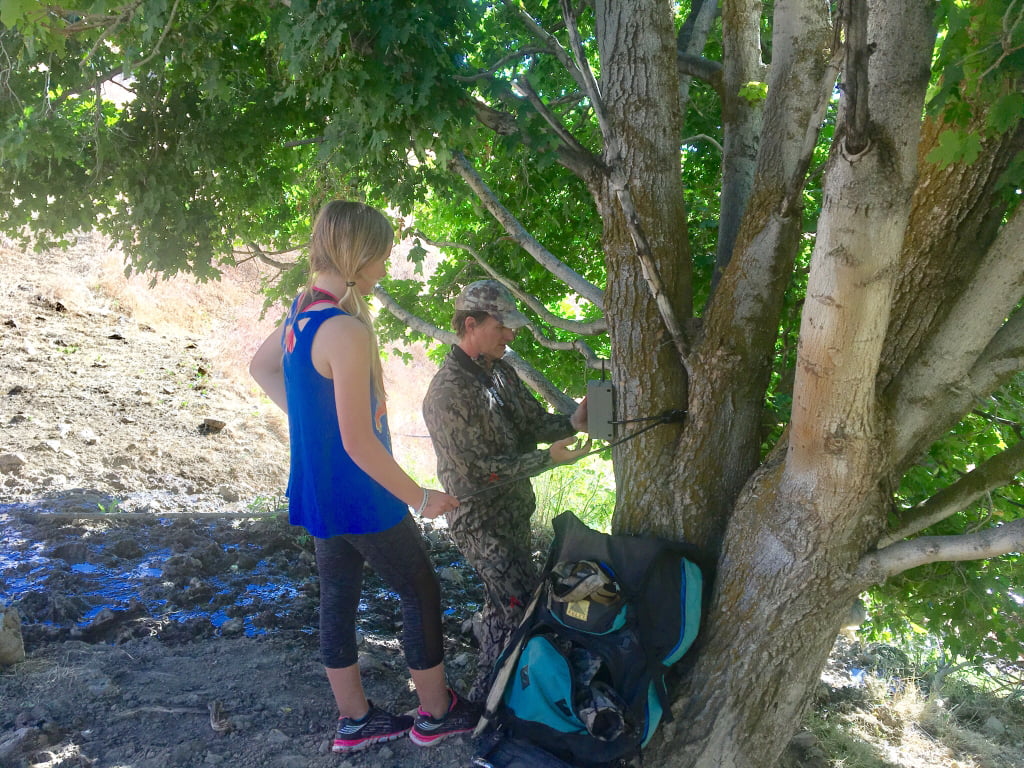 I then chose an upload frequency of twice daily (noon and midnight), early dusk-to-late dawn activity, locked it to the tree, and headed home feeling both excited and nervous.
I then chose an upload frequency of twice daily (noon and midnight), early dusk-to-late dawn activity, locked it to the tree, and headed home feeling both excited and nervous.
Ryan placed his GXW on a North Idaho mountain peak that required a 3,000-foot climb, making it perfect place to employ a wireless camera. He, too, found plenty of signal strength to receive uploads.
Over the next few weeks, I received uploads daily of deer, coyotes, owls, and a few birds in the late evening and early morning before the camera automatically switched off. The trigger speed was phenomenal as evidenced by birds and deer caught at the very fringe of the picture as they came into the field of view.
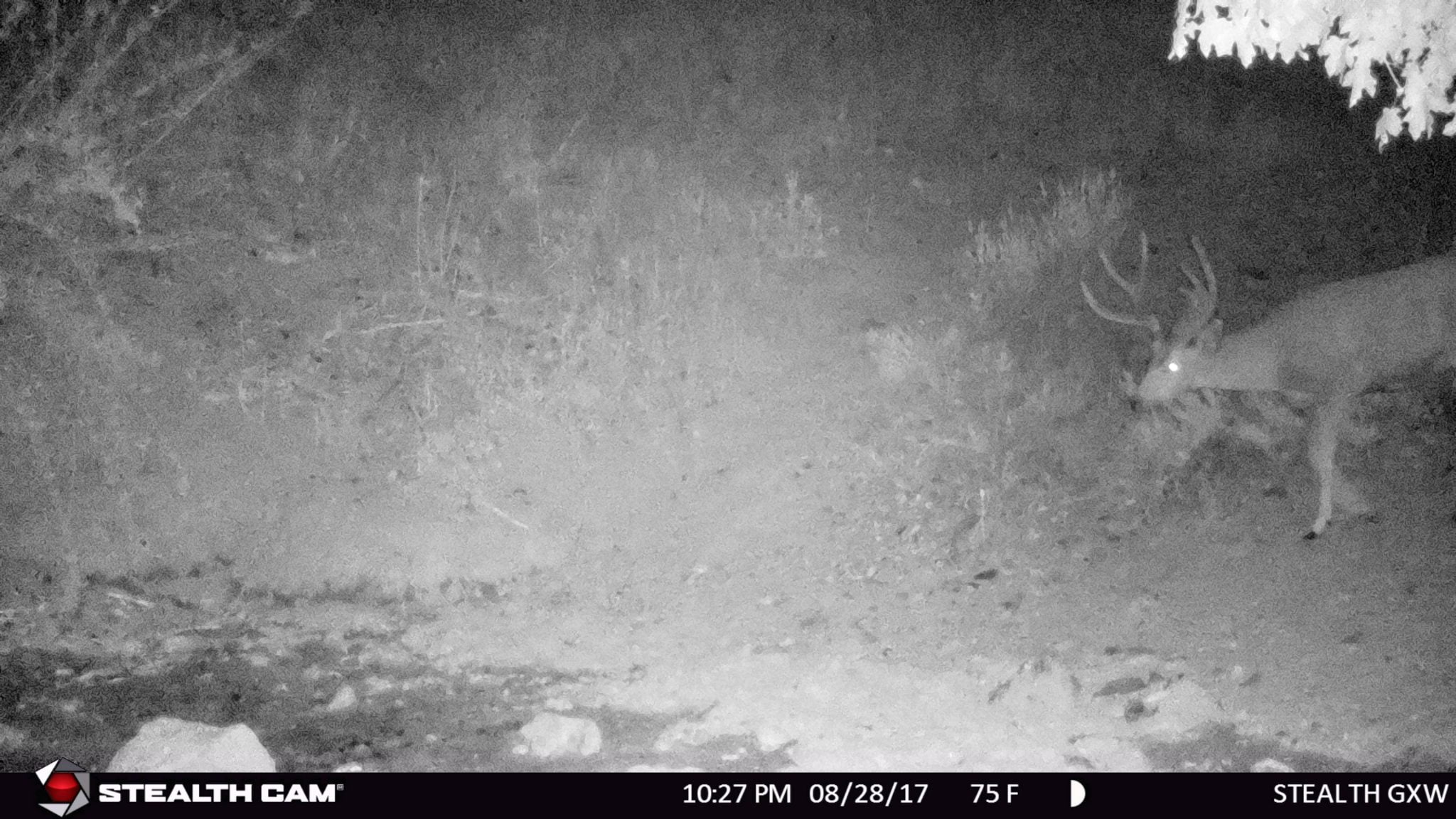
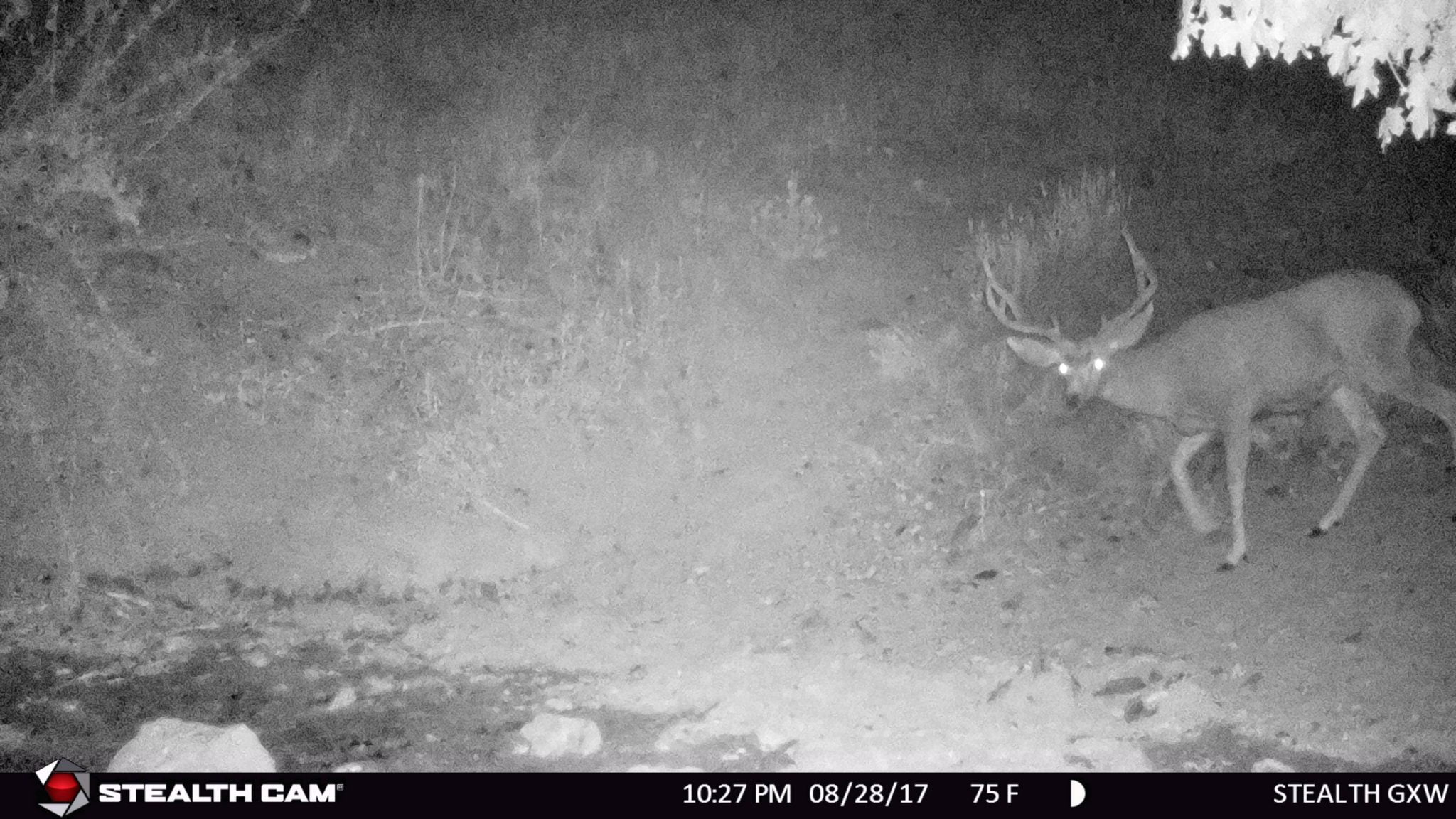
There were two days when I received no uploads, so I called Stealth customer service. The gal knew exactly what the problem was: tower updates. These are performed without notice by the cell companies. When the towers came back on two days later, I started receiving updates again but never received the images from the days that were affected. When I retrieved the SD card a few months later, there were no photos for those dates. That could mean the camera was not triggered during the down days or the images were lost–I’ll never know for sure.
There were also a few days that I was out of cell service so I couldn’t open my app. Like the tower updates, I didn’t receive those images, but when I retrieved the SD card, I found there were images recorded for those days. If you knew you were going to be out of cell service, you could delay your uploads to receive the images at a later date when you knew you’d back in cell service.
Over the next two months, the GXW performed very well with just those few minor issues. I was able to change all settings from my app. I was too chicken to try video as I didn’t trust the app to tell me how much battery I really had remaining.
I did visit the area to scout during the summer, but never took the time to hike into the GXW, as I already knew what was going on in that canyon. The wireless option saved me two trips of several hundred miles compared to previous years. Several good bucks showed up in my uploads that I put on my hit list. I can’t tell you how exciting it is to have near real-time intel coming to your phone daily (your boss won’t be happy that you own a GXW, if you know what I mean.)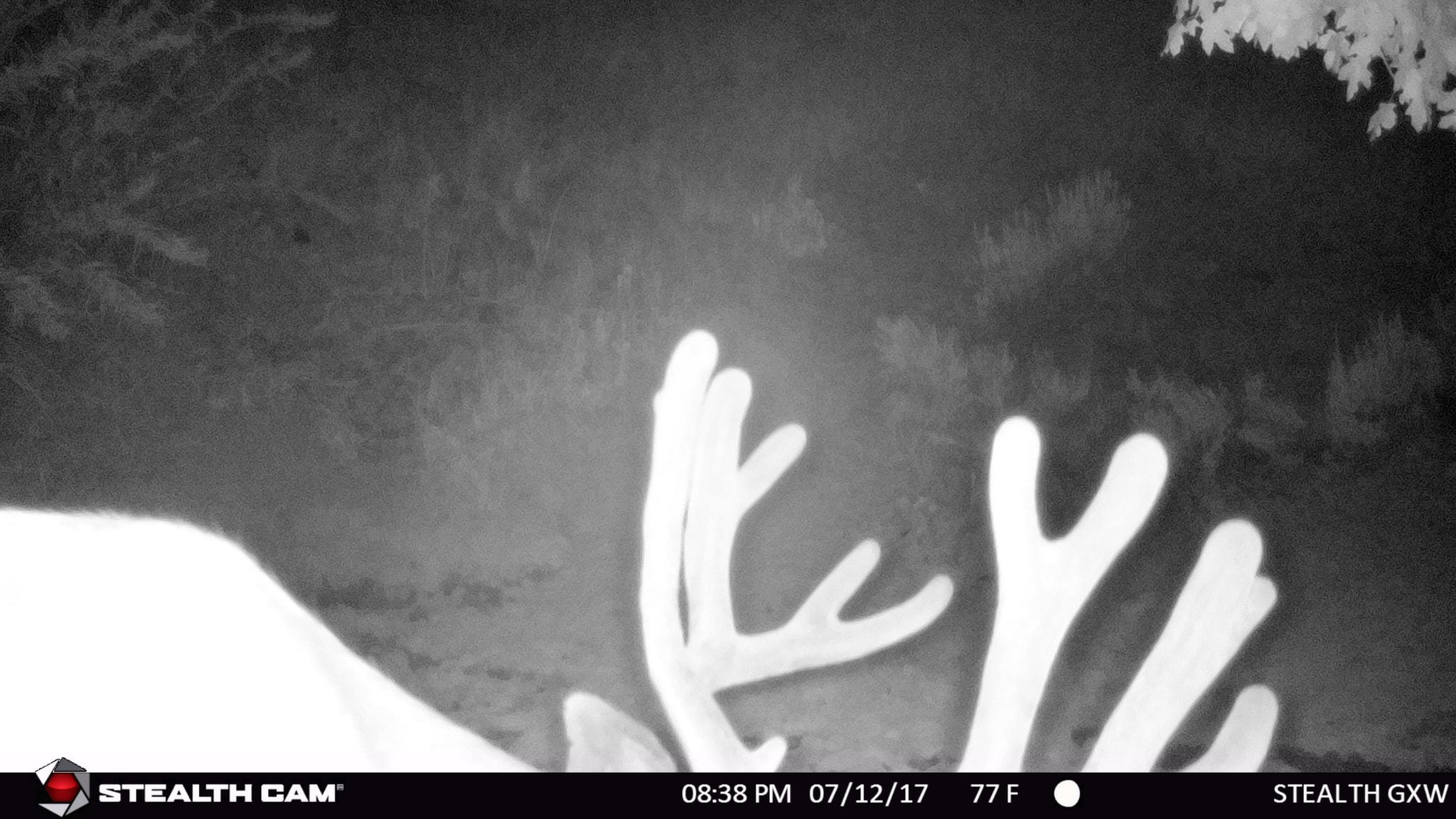
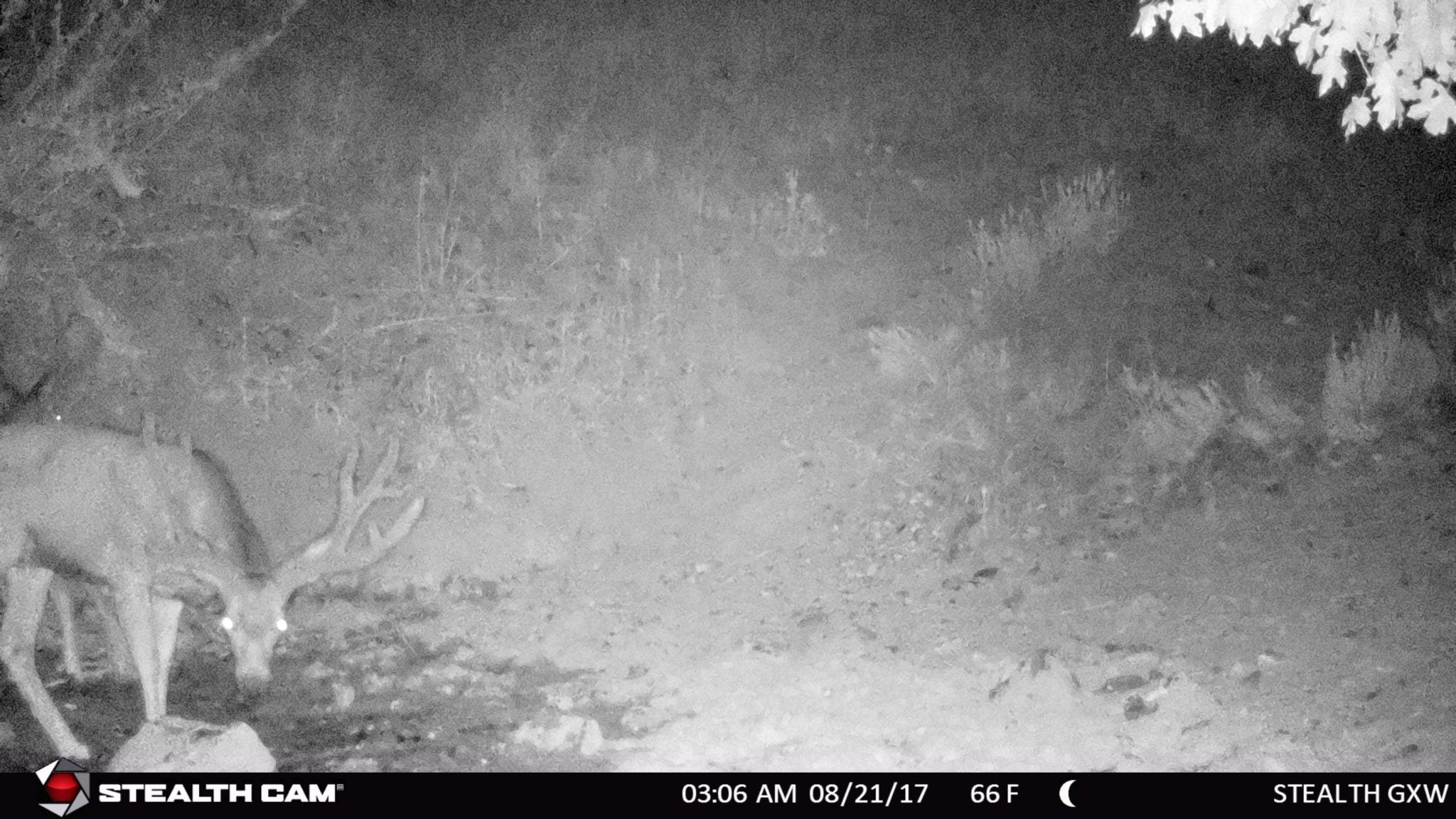 Archery season opened August 30th, and while legal in Idaho to leave the camera up, I went ahead and pulled it August 29th to avoid any issues. And besides, I already had all the intel I needed.
Archery season opened August 30th, and while legal in Idaho to leave the camera up, I went ahead and pulled it August 29th to avoid any issues. And besides, I already had all the intel I needed.
Summary
My GXW was in the field from June 24 to August 29, a total of 66 days. The camera was still reporting 100% battery, and 92% SD capacity when I pulled it. Had I known just how little battery and data I’d really use, I’d have tried the video option. I also received at least 97% of my images. Ryan had a very positive experience with his GXW that nearly mirrored mine.
The data plan is relatively cheap (the $30 paid for data covered my entire summer) and the battery life is phenomenal (at the settings I used). Trigger speed was also great. With the ability to remotely control the camera, a user can fine tune settings on a daily basis if needed. Add to that the peace of knowing your camera is operational (no more finding out your camera has been dead for two weeks!) and you have some serious advantages over non-wireless cameras. These benefits to me are the highlight of the GXW.
I can tell you I’d highly recommend these GXW cameras if you have areas that are either a long way from home or just very difficult to check. I don’t think the wireless GXW is a complete “game-changer”, but they do expand your reach.
At $319, they are about three times the amount of money as lower end cameras, but you could off-set some or all of that cost in wear-and-tear on your vehicle, depending on how often you’d check a non-wireless camera.
For 2017, the IRS mileage rate of 54 cents/mile means if you saved 590 miles of driving due to wireless capability, you’d earn your camera back in tax savings (depending on your tax situation.) I estimate I saved about $250 in vehicle wear using the GXW, plus the time saved in not making two trips. Your results could vary but at least consider the potential savings before you rule out the GXW as “too expensive”.
Also worth noting is that the GXWs operate on 3G. There is a chance that AT&T will, at some point, require devices to adapt to 4G. This could mean that the GXW will need upgraded but talking to Stealth Cam directly, they told me that they’ve always been very proactive and reasonable with their trade-in programs and would surely help customers get into any 4G camera’s reasonably.
To note, BlackOvis has a volume discount on all of their Stealth Cams that the very serious user will find appealing. Click on image below to purchase the GXW
A big thanks to BlackOvis and Stealth Cam for letting Ryan and I do this review! If you found this review helpful, please support BlackOvis when shopping for gear.
You can ask Robby questions or discuss the GXW Stealth Cam here















